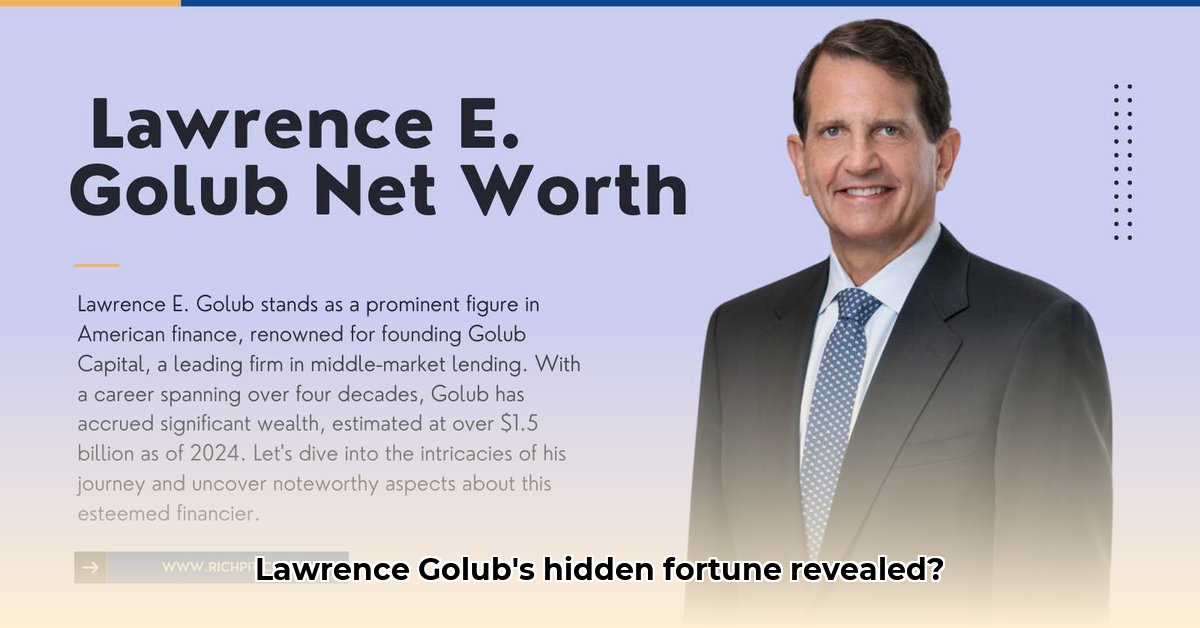
While the precise net worth of Lawrence Golub, the driving force behind Golub Capital, remains undisclosed, the firm's remarkable success provides compelling insight into the factors contributing to his substantial wealth. This article delves into the strategic decisions, innovative approaches, and risk management strategies that have propelled Golub Capital to prominence in the private credit market, offering a glimpse into the journey of a financial powerhouse.
Golub Capital's Rise: From Buyouts to Private Credit Dominance
Golub Capital's story is one of adaptability and astute market timing. Initially focused on leveraged buyouts, the firm strategically pivoted to private credit lending following the dot-com bust of 2000. This pivotal decision positioned Golub Capital to capitalize on a burgeoning market segment – middle-market companies underserved by traditional banks. The subsequent years saw explosive growth, with assets under management exceeding $45 billion by 2022, a testament to the firm’s strategic prowess. How did they achieve this? It wasn't merely luck; it was a calculated combination of factors.
Key Factors Contributing to Golub Capital's (and Lawrence Golub's) Success
Several critical elements contributed to Golub Capital's exceptional performance and, consequently, the significant wealth of Lawrence Golub:
Strategic Market Positioning: Golub Capital identified and expertly exploited the underserved middle-market lending space, positioning themselves perfectly to capitalize on the demand from companies that traditional banks could not readily serve. Wasn't this perceptive timing a key component of their success?
Innovative Risk Assessment: The development and implementation of innovative tools, such as the Golub Capital Altman Index (GCAI), allowed for a more sophisticated and accurate assessment of borrower risk, leading to better investment decisions and reduced losses. How did this proprietary index give them a decisive edge in the competitive private credit landscape?
Family Leadership & Synergy: The collaborative leadership of the Golub brothers fostered a unique synergy, combining distinct skillsets and perspectives for remarkably effective decision-making. This family-run approach created a cohesive and efficient organization. Does this family-centric approach exemplify a unique model of leadership in the financial world?
Risk Management and Diversification: Ensuring Long-Term Stability
Private credit lending inherently involves risk. Golub Capital's remarkable success is not solely due to opportunity recognition; it’s equally attributable to a rigorous and carefully executed risk management strategy. Diversification across various industries and borrower types mitigated the impact of potential defaults. Furthermore, sophisticated risk assessment models, internal controls and detailed due diligence processes were employed to minimize exposure to market fluctuations. How much did these risk mitigation processes enhance the firm's sustained profitability and its reputation for stability?
Philanthropy and Long-Term Vision: Beyond Financial Metrics
Beyond financial achievements, Lawrence Golub and his wife have demonstrated a significant commitment to philanthropy, underscoring a long-term vision that extends beyond immediate financial returns. Their charitable contributions reflect a dedication to social responsibility and suggest a holistic approach to success, emphasizing values beyond pure financial metrics. Does this commitment to philanthropy illustrate a broader perspective on wealth creation and its impact on society?
Conclusion: A Legacy of Strategic Excellence
While a precise net worth remains elusive, Lawrence Golub's wealth is undeniably substantial, a direct result of Golub Capital's extraordinary success. The firm's journey illustrates the power of strategic adaptation, innovative risk management, and a long-term vision. Golub Capital's story highlights not only financial acumen but also the importance of a cohesive leadership structure, effective risk mitigation, and a commitment to long-term value creation, both financial and social.